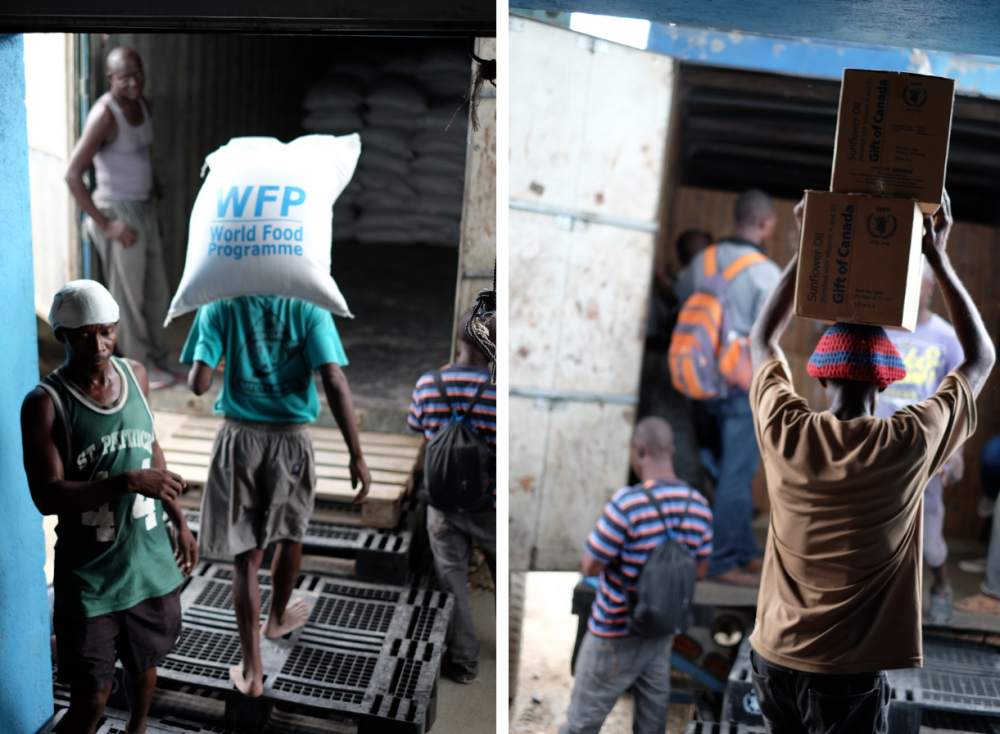
5 Ways WFP Is Preparing In Case Of Emergency In Haiti
On January 12, 2010, Haiti was devastated by an earthquake of unprecedented magnitude that ravaged the capital city Port-au-Prince. Over 200,000 people died, and almost a quarter of the country’s population was displaced.
While the disaster six years ago was one of the country’s worst in memory, Haiti has had an unfortunate history of such events. Earthquakes, hurricanes, cyclones, and droughts: fate has often dealt Haiti a cruel hand.
Haiti is ranked sixth on the list of countries most vulnerable to climate change. Given Haiti’s record of misfortune, here are five measures WFP is taking to be prepared with an immediate response in case of future disasters.
1) Prepositioned stocks of food for rapid distribution
After a natural disaster, hunger is often the most immediate result and demands an emergency response. To facilitate the immediate and rapid distribution of food, WFP maintains stocks in its warehouses around the country, ready to be distributed to affected populations at a moment’s notice.
With these prepositioned stocks, WFP can feed up to 300,000 people in Haiti quickly, without losing time to the usual logistical process of delivery from abroad and transportation locally. “Time saved means lives saved,” explains Cedric Charpentier, Head of Programme at WFP Haiti.
Such rapid assistance has been put to the test in recent weeks. WFP has, since November 2015, been using a portion of these prepositioned stocks to assist 120,000 people severely affected by the drought afflicting Haiti over the past four years – exacerbated by the more recent El Nino weather pattern.
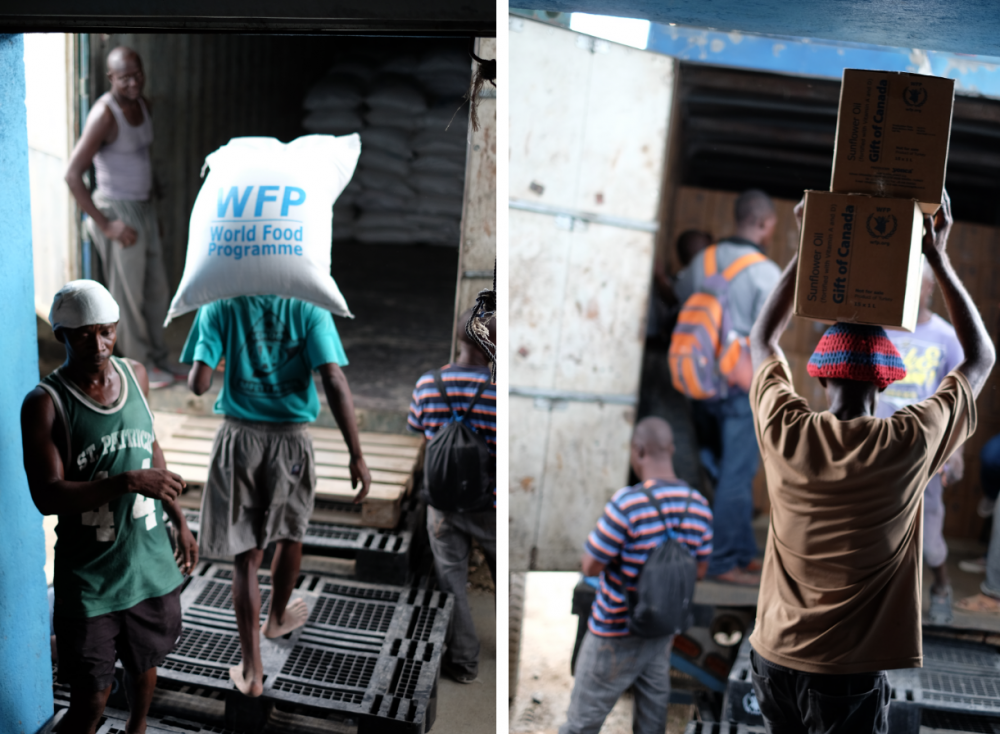
Food is being loaded on trucks to be distributed to the populations affected by the drought in October 2015.
2) Maintaining communications in case of emergency
Communications are a priority when disaster strikes: without a means of staying in contact, humanitarian agencies and workers, disaster experts, and the Government cannot operate efficiently.
WFP, in partnership with the Haitian Government, has set up emergency radio communication centres in various sites with the objective of bolstering the capacity of local and national authorities to respond quickly and in coordination to disasters. Four telecommunication centres are now operational in Port-au-Prince, Gonaives, Cape Haitian and Jeremie. Six more centres are being set up to cover the whole country.
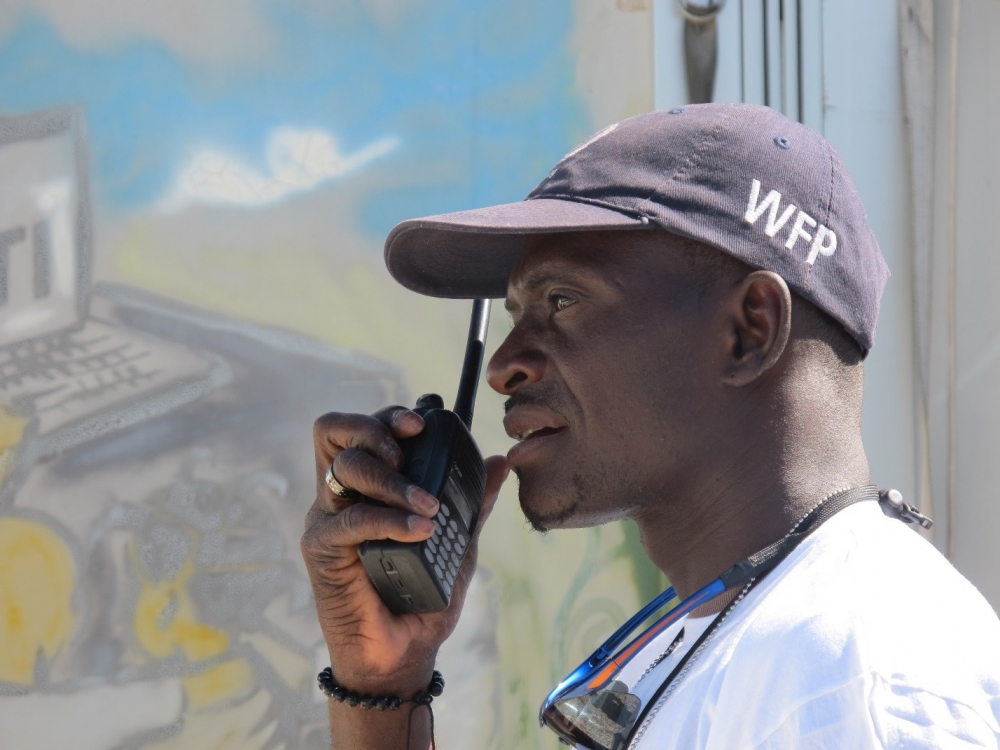
Makenson Dellile is an electrician assistant at WFP Haiti, he started to work at WFP just after the 2010 earthquake, 6 years ago.
3) 72 hours to evaluate food security
A high priority after an emergency is to understand the food security situation of the population. What are people’s needs? Who is the population affected? Where are they located? In order to answer such questions and coordinate the response, the Government, WFP and NGOs must work together to complement their actions.
To facilitate preparations for an emergency, WFP organized a three-day workshop last month involving the Government of Haiti and partner NGOs, including an emergency food security assessment simulation exercise. The objective: to evaluate food security within the first 72 hours after disaster strikes.
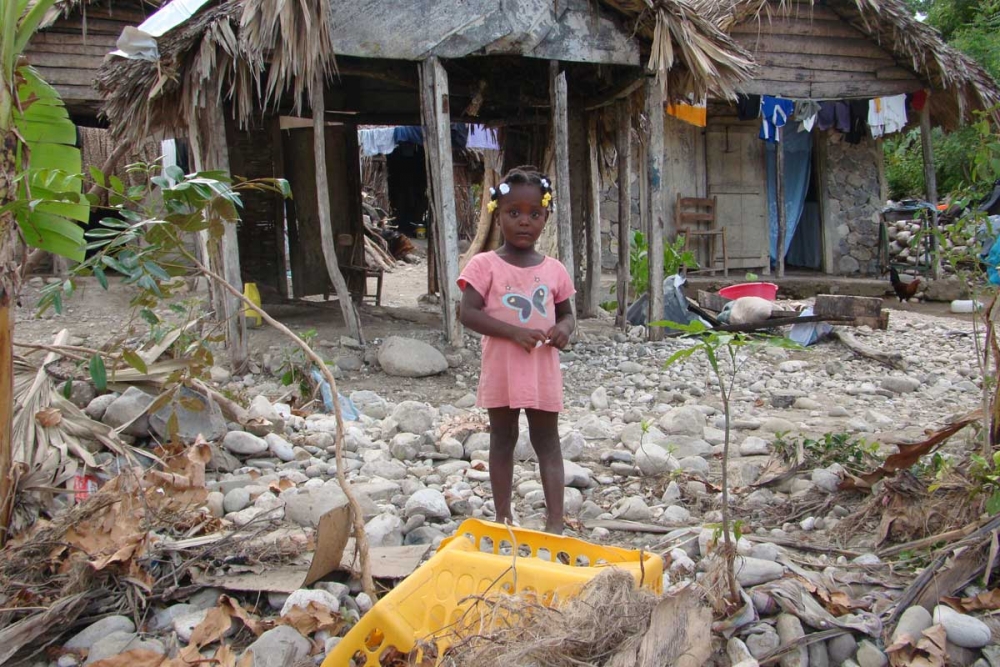
4) A database that can better help identify the most vulnerable populations
Lessons learned from that WFP workshop include the importance of creating a database that can better help identify the most vulnerable populations. WFP is compiling a database of the most vulnerable populations in Haiti, as part of the Kore Lavi project. In the event of an emergency, this information facilitates the targeting of those families with the most important or urgent needs.
This database is being shared with various actors in the humanitarian community including the Government, NGOs, and all United Nations agencies. “This database is the first of its kind in Haiti”, says Thomas Calvot, Vulnerability Targeting Technical Coordinator for WFP Haiti.
Close to 700,000 people have already been registered in the database, and the number is growing each month.
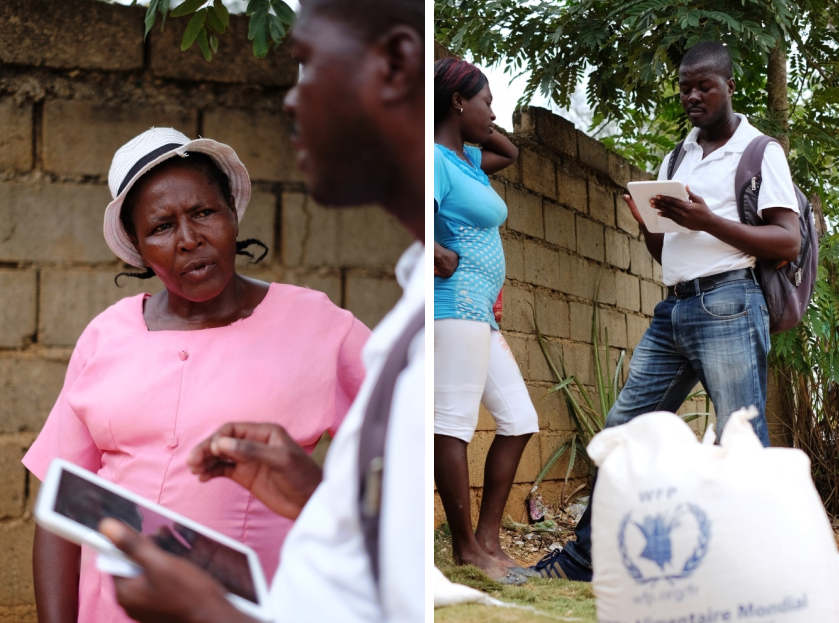
A WFP field monitor is interviewing beneficiaries to collect data in October 2015.
5) Constantly updated logistics data for the humanitarian community
In addition to distributing food to families affected by natural disasters, WFP provides crucial logistics support to the humanitarian community. As head of the logistics cluster, WFP constantly updates the sort of detailed, nuts-and-bolts information about where, when and how best to deliver the aid that is essential when disasters strike. This might range from which boat can dock in what port to deliver aid, or what roads are best used by what means to quickly reach affected populations. Such details are continually changing and must be closely monitored by WFP experts.
“This information must be updated frequently in order to avoid losing time in case of emergency”, explains Nuru Jumaine, Head of Logistics at WFP Haiti.
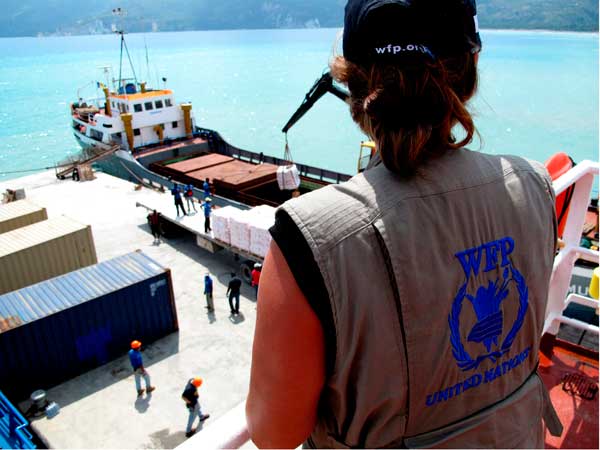
This piece was written by Lorene Didier, WFP Communications & Government Partnership Officer in Haiti for WFP.org and has been republished with permission.




